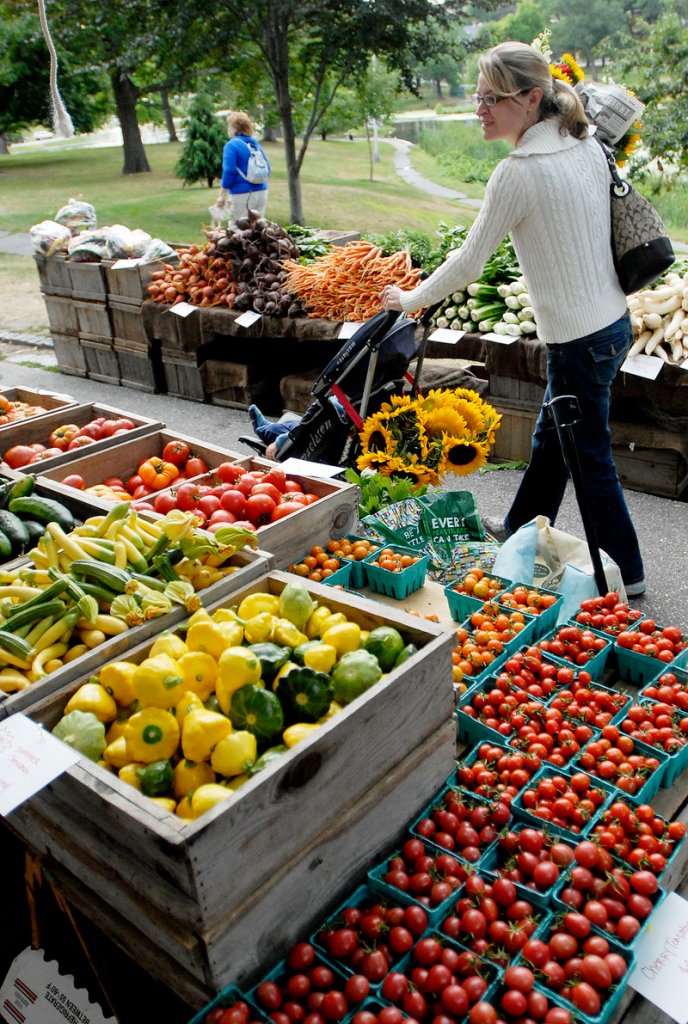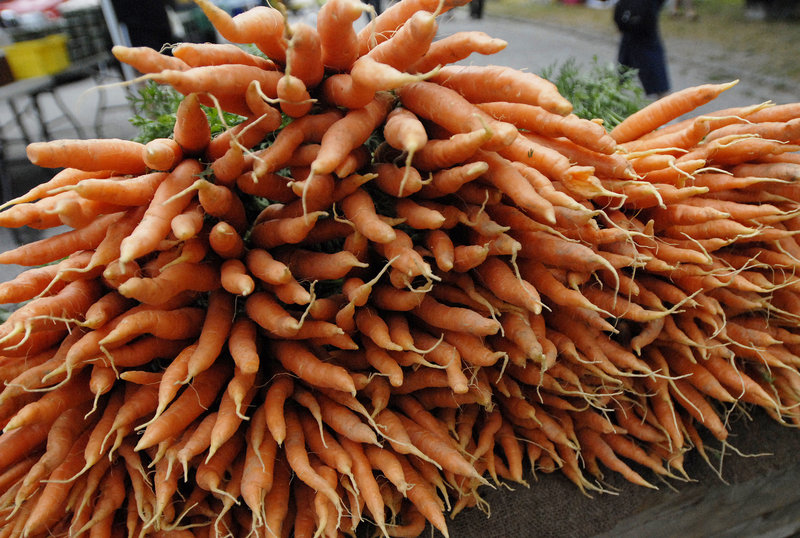It’s harvest time.
True, most harvest celebrations are held in October and November, once the harvest is complete and, traditionally, you give thanks for having enough food to get through the winter.
But farmers and home gardeners are picking a whole range of fruits and vegetables.
Just walking through our garden plot, we have raspberries and blueberries, summer squash and zucchini, lettuce and Swiss chard, onions and garlic, potatoes and one watermelon. And we are about to be hit with a profusion of carrots, green beans, peaches and, if all goes well, tomatoes and peppers. Real farmers already have those. Erid Sideman of the Maine Organic Farmers and Gardeners Association said the peak harvest is just beginning.
“With sweet corn and potatoes, it is reaching its peak,” he said, “and it is going to go a lot longer, because the fall crops are even more exciting, especially for people who are going to put things away: potatoes, sweet potatoes, winter squash. It is time to start buying and packing things away.”
Mark Hutchinson, an Extension educator working in Knox County who specializes in home horticulture, agrees that the harvest is well under way.
“The actual harvest started sometime around mid-June, with the early crops like peas, lettuce and so forth,” Hutchinson said. “That is a significant market for a lot of commercial people. And it is the same for the home gardeners. A lot of people in the city wouldn’t think of eating beet greens, but they’re eaten in great abundance here. They come in right after the fiddleheads.”
But Hutchinson admits that most people think of corn, tomatoes and squash when they think of the harvest. And they are now well-established in the markets.
Hutchinson noted, as has everyone, that the season is a couple of weeks ahead of normal. Early apples have reached the market, and the blueberry season is near its end — it usually runs into early September.
He did say that farmers markets are reporting a big jump in business this season.
“The winter farmers markets have made a big difference,” he said. “I had a grower tell me the reason the summer markets are doing so well this year is that people just got into the habit of going to them all winter.”
Many farmers are selling out of everything they take to the market, and one farmer who sells chickens says he can’t keep up with demand.
So, if the harvest begins in early June and you can continue picking vegetables into late September and storing them easily a couple of months after that, is there any reason to buy out-of-state fruits and vegetables from mid-June to Thanksgiving?
“As long as you don’t want things that aren’t in season, there is no reason,” Hutchinson responded. “You are not going to get sweet corn on the first of July, but you can get hothouse tomatoes early on.”
“But if you eat what is fresh here in Maine, you should be able to do it easily,” he said. “We had peas by the third week in June, and then beans, and summer squash and zucchini.”
Hutchinson said he has seen more people doing winter storage of root crops such as potatoes, carrots, rutabagas and beets.
The increase in sales at local markets brought to mind the calculation done several years ago by Russell Libby, executive director of the Maine Organic Farmers and Gardeners Association.
He said that if every family spent $10 a week at local farms, it would keep $100 million in the Maine economy and be enough to keep the state’s farms profitable.
Hutchinson doesn’t think that $10 a week has been reached, even with inflation.
“That is a tough sell,” he said. “In the inner city, a larger percentage of those families don’t buy at farmers markets. I would be happy with 30 percent of families spending $10 at local farms. That would make a big difference.”
So, I will close with just a few suggestions.
• If you have a vegetable garden, keep up with the harvesting. Check it out at least every other day.
• If you can’t eat it all fresh or preserve it, give it away — either to neighbors or to food pantries through Plant a Row for the Hungry.
• What you don’t grow, buy from local farm stands and farmers markets.
• Try some locally grown vegetables you have never eaten before.
• And think storage. You may want to set up a root cellar. The vegetables will be cheaper if you buy in bulk just before winter and store them yourself.
Tom Atwell can be contacted at 791-6362 or at:
tatwell@pressherald.com
Send questions/comments to the editors.




Success. Please wait for the page to reload. If the page does not reload within 5 seconds, please refresh the page.
Enter your email and password to access comments.
Hi, to comment on stories you must . This profile is in addition to your subscription and website login.
Already have a commenting profile? .
Invalid username/password.
Please check your email to confirm and complete your registration.
Only subscribers are eligible to post comments. Please subscribe or login first for digital access. Here’s why.
Use the form below to reset your password. When you've submitted your account email, we will send an email with a reset code.